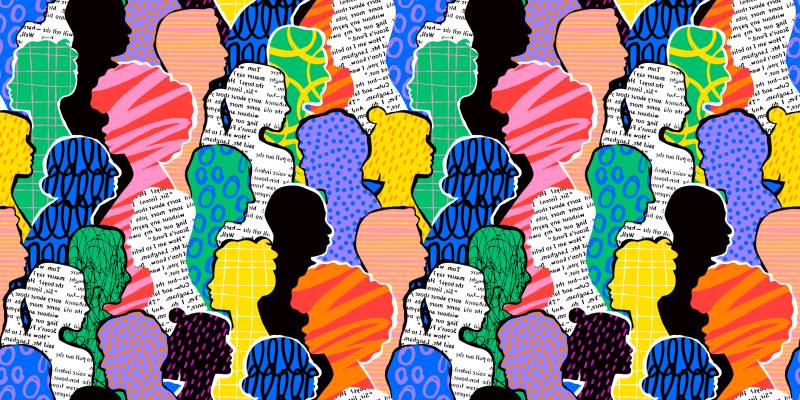In education, the benefits of incorporating the arts extend far beyond the canvas to include better communication, behavior and social-emotional skills. Despite these advantages, teachers of other subjects sometimes underestimate the complexity of integrating arts practices into their classrooms. “Art is very rigorous,” said Christina Jenkins, an arts educator and former social studies teacher in California. “I think that it is not given credit for being rigorous.” Jenkins, who studied at Parsons School of Design, approached her social studies classroom “as a non-art educator who sees the promise in art-based practices.” Now dedicated to supporting educators in embracing creativity and prioritizing arts, she organizes field trips for educators to feel inspired about their practice and reconnect with how learning feels.
During a recent presentation at the Deeper Learning Conference in San Diego, Jenkins shared how the core arts education practices of assignment design and critique can apply to other areas of learning. As part of the session, she provided attendees with access to her carefully curated collection of art books. These resources offer guidance for educators seeking to infuse arts into different subjects. They steer educators away from superficial approaches — such as replacing a written report with a diorama, which can reinforce the idea that the arts are secondary or optional — and toward an approach where art is integral to the learning process.
If you’re looking for art assignments you can do on Monday
Wicked Arts Assignments: Practicing Creativity in Contemporary Arts Education is an arts book that is applicable to teachers across disciplines, Jenkins said. Edited by Emiel Heijnen and Melissa Bremmer, this book offers insights into what makes art assignments impactful and an array of assignments crafted by arts educators across different contexts. “It’s a really accessible way of understanding what an art practice can look like in a non-art classroom,” Jenkins said.
One assignment from the book, called “Change the Fairytale,” prompts students to introduce an unexpected twist in a traditional fairytale. “Fairy tales are a shared vocabulary that many of us have around storytelling. And also, when understood today, they’re really problematic. All sorts of bias shows up in traditional fairy tales,” Jenkins said. This project can take various forms including a short story, comic or puppet show, but it has a natural home in an English classroom. This assignment enables students to have discussions about narrative structures, cultural interpretations and the power of storytelling to challenge established norms and perspectives.
In addition to Wicked Art Assignments, Jenkins recommended Draw it with Your Eyes Closed: The Art of the Art Assignment, edited by Paper Monument. This book features essays, drawings and assignments from over a hundred creators. It’s more esoteric and abstract than Wicked Art Assignments, Jenkins said. For instance, one of the assignments asks students to “make a drawing using nothing but your car.” However, Draw it With Your Eyes Closed includes examples from prominent figures in the art world, making it a valuable companion resource when learning about contemporary art movements and influential artists. Additionally, the abstract assignments also can bring an interdisciplinary approach to a variety of subjects.
For educators interested in the intersection of photography and storytelling, Jenkins suggested Eyes Open: 23 Photography Projects for Curious Kids, compiled by Susan Meiselas. This collection of photography ideas can be used as prompts for short stories and provide a versatile tool for educators to engage students in visual storytelling across various subject areas.
If you’re interested in cultivating an arts-oriented classroom
Making Comics and Syllabus outline real projects used by Lynda Barry, a cartoonist, past MacArthur Fellow and University of Madison professor. The book includes assignments and examples of student work. “Her projects are very oriented towards drawing and understanding what she calls the image world. I think there’s a lot that non-art educators can learn,” Jenkins said. For example, Barry invites teachers to take on a new persona every year and advise students to do the same. Jenkins explained that this practice makes it easier to break free from limiting beliefs, such as “I can’t draw,” and embrace creative possibilities. Another practice that Barry suggests is inviting students to sit in a different seat every day. Open seating might not work in every classroom setting, Jenkins said; however, this approach communicates to students that “you learn different things from the folks sitting around you and [that] feeling a slight sense of instability is creatively productive.”
If you’re interested in using arts to reshape classroom power dynamics
Inviting students to create art can shift the power dynamic towards students by fostering a sense of ownership, agency and self-expression, according to Jenkins. When students are encouraged to express themselves artistically, they are no longer passive recipients of instruction but active participants. However, teachers interested in creating a more democratic classroom may also harbor some concerns about whether it will become chaotic. For these teachers, Shaped by the People: Conversations on Participatory Education, edited by Harrell Fletcher and Molly Sherman can be a valuable resource. “This is a collection of conversations between artists and educators about how to design learning environments that are truly democratic, which often have some kind of artistic output,” Jenkins said.
If you’re interested having students express their opinions through art
Art of Protest: Creating, Discovering, and Activating Art for Your Social Movement by De Nichols draws on the tradition of protest art to provide tips and ideas for creating revolutionary designs. “[The prompts] invite students to put forward a point of view about a thing they believe in,” Jenkins said, adding that it “doesn’t need to necessarily be the thing that other people are protesting about most publicly right now.” She said that teachers find a lot of success with the book because students are hungry for the opportunity to express their opinions.
When teachers ask students to show them what they think, it’s powerful, Jenkins said. “I think we have to, as educators, constantly work to create the conditions for students to do that with us, because it’s really easy to not do that, in my experience.”
Whether you teach English or math, these book recommendations offer practical strategies for integrating arts into any classroom. MindShift










